Since the world has shifted towards embracing new technologies, there has never been a greater need for organizations to make intelligent decisions based on data collected. Businesses are always on the lookout for opportunities to apply data processing into the regular processes, thus leading to the idea of embedded analytics technologies. These tools enable organisations to bring the flexibility, granularity and immediacy of real-time decision support capabilities directly into applications, personal and shared work spaces, and as part of analytical and decision interfaces in business processes, for dissemination of data across organisations.
Due to growing availability of data, advent of artificial intelligence, fusion of cloud technologies, the advancement of the embedded analytics tools for 2025 stay progressive. Using the information presented in this article, we will discover the leading embedded analytics platforms that will shape and reshape the business interactions and data utilization in the future year of 2025.
What are Embedded Analytics Tools?
Embedded analytics softwares are standalone products accompanied with data analysis and reporting capabilities, targeted to be connected with other Business applications or websites and Workflows respectively. Various tools can be used to allow information, reports and dashboards to be accessed directly from the application being used by a particular user.
In fact, they “bake” analytics into applications that employees, customers, or partners are already using so there is no need for additional platforms for analytics. These solutions usually provide some functionalities such as dashboards, charting capabilities, analytics, and data drills. Both technical and non-technical users can interact with these technologies, and provide a simple method to analyze and answer data questions in their work processes.
Key Features of Embedded Analytics Tools
Embedded analytics platforms are defined by several key features that make them both powerful and versatile:
- Data Integration: These Embedded analytics tools can easily interface with different kinds of data sources, for instance, databases, a CRM system, and cloud platform, where users can analyze data from different touchpoints.
- Interactive Dashboards: Users can get immediate feedback on the views selected and can use them to generate further and more detailed analysis and monitor key performance indicators and milestones.
- Customizable Visualizations: Software products with embedded analytics are known to provide a lot of options for the choice of visualizations among which there are charts, graphs, and maps, for instance, which can be adjusted according to the customer’s requirements.
- Real-time Analytics: Information is updated and presented in real time to support business decisions because Big Data does not let organizations wait for results.
- Predictive Analytics: Business-critical, built-in intelligence delivers forecasting facilities to forecast such key indicators as trends, customer behavior and others.
- Collaboration: A great number of embedded analytics tool solutions enable users to share insights, reports, and dashboards with other people.
- Security and Governance: These tools are commonly designed with good security to safeguard data and meet the assumed security standards, for example, GDPR.
Benefits of Embedded Analytics Tools
- Enhanced Decision-Making: Pushing analytics into applications means that employees and decision-makers have real-time information in order to make better decisions.
- Improved User Experience: By connecting data and reports with other business applications, the utilization results in a new generation of BI, minimizing the need to navigate to different software.
- Cost-Effective: Instead of implementing new BI systems to attain the functionalities of BI, the business analytics tools are embedded into the current systems of businesses.
- Increased Productivity: As with BI solutions, embedded analytics enhance the methods used in acquiring, analyzing and applying data with an overall view of improving productivity in functions that cut across the departments.
- Better Collaboration: By allowing sharing and collaboration, these tools help improve working in a team and guarantee the availability of the right data to the people.
- Scalability: Embedding analytics tools can grow along with the businesses that use it; it can manage the expanding volume of data, larger user base, and higher levels of analysis.
10 Best Embedded Analytics Tools
Here is a comprehensive list of the 10 best embedded analytics platforms for 2025:
1. Tableau Embedded Analytics
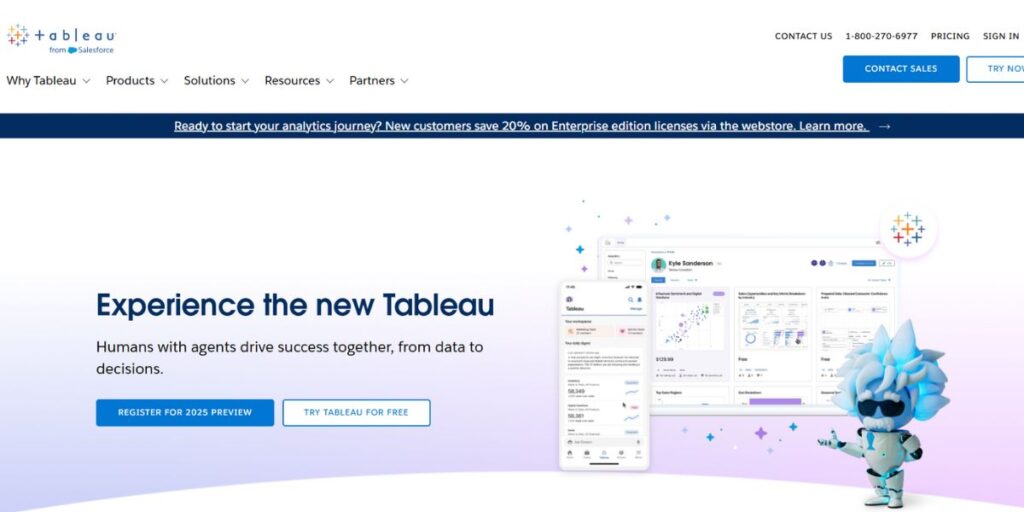
Tableau offers a highly effective solution for delivering analytics within applications which are used in organizations. Its data visualization features allow users to develop effective and interactive dashboards that are automatically updated providing users with real time information. It is also convenient because Tableau allows integration with several data sources, beneficial for various kinds of businesses.
For simple users, it has operational features such as drag and drop options while for technical skills; it has enhanced data blending and filtering options. However, this tool is ideal for large enterprises with the deep pockets to afford the software’s steep price and strict infrastructure requirements while smaller firms are likely to find it out of their price range. Nevertheless, this approach is suitable for enterprises who want to build highly scalable and sound embedded analytics.
Key Features:
- Seamless integration with multiple data sources
- Highly customizable dashboards and visualizations
- Advanced data blending and filtering capabilities
Pros:
- Easy to use with a drag-and-drop interface
- Strong community support and resources
- Supports real-time collaboration
Cons:
- Can be expensive for small businesses
- Steep learning curve for advanced features
- Requires robust infrastructure for large datasets
Ideal For: Enterprises looking for robust, scalable embedded analytics
Pricing: Starts at $70 per user per month
Rating: 4.5/5
Website: www.tableau.com
2. Power BI Embedded
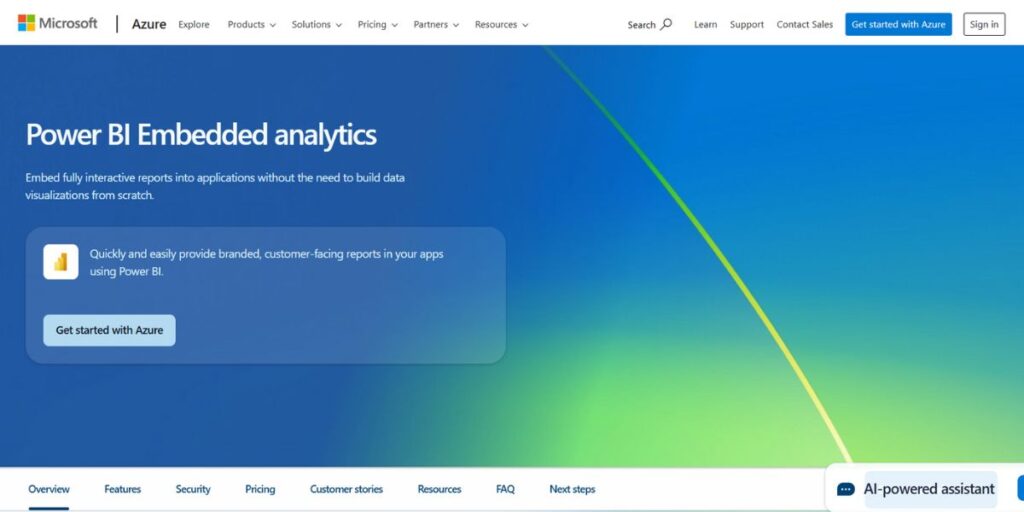
The Power BI Embedded from Microsoft enables developers to integrate Power BI into applications. Because it is tightly integrated with Azure and other Microsoft products the tool makes real time data analysis possible for businesses that operate within the Microsoft ecosystem. Users can create individualised dashboards and use the opportunity to implement meaningful reporting options securely.
It makes it an advantageous technology to work with in that it boasts of cheap acquisition, but its performance decreases sharply with big data and has few visualization capabilities compared to its counterparts. Companies already leveraging the Microsoft platform would find power BI embedded as a perfect fit as an addition of BI functionalities.
Key Features:
- Integration with Microsoft Azure services
- Customizable dashboards and reports
- Real-time data analytics and updates
Pros:
- Affordable pricing model
- Seamless integration with Microsoft Office 365 and other Microsoft tools
- Cloud-based for easy access and management
Cons:
- Limited visualization options compared to other tools
- Performance can be slow with large datasets
- Requires Microsoft ecosystem for optimal use
Ideal For: Organizations already using Microsoft products
Pricing: Starting at $20 per user per month
Rating: 4.6/5
Website: www.powerbi.microsoft.com
3. Sisense for Cloud Data Teams
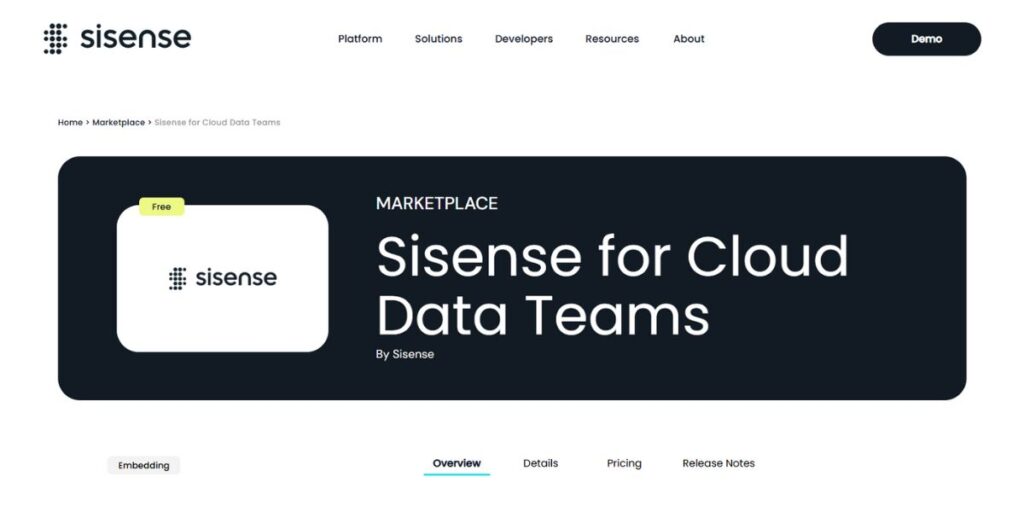
Sisense is a cloud-native embedded BI that is built for applications data. It enables continuous creation and integration of live dashboards and other visualizations, making the data available to the end-user without interruption. The advanced integration of artificial intelligence and possibilities to customize owing to advanced settings make Sisense highly scalable for enterprises.
But it involves the installation and integration of this application that needs technical skills, and it is costly for small organizations. complex data models and important analytics make Sisense appropriate for large businesses or SaaS companies that look for strong data options.
Key Features:
- AI-powered analytics and insights
- Customizable widgets and dashboards
- High scalability for large organizations
Pros:
- Powerful analytics engine
- Flexible and customizable integration options
- Supports complex data models
Cons:
- Can be complex to set up
- Pricing can be prohibitive for smaller companies
- Requires technical expertise for advanced features
Ideal For: Large enterprises and SaaS companies
Pricing: Contact for pricing
Rating: 4.4/5
Website: www.sisense.com
4. Looker
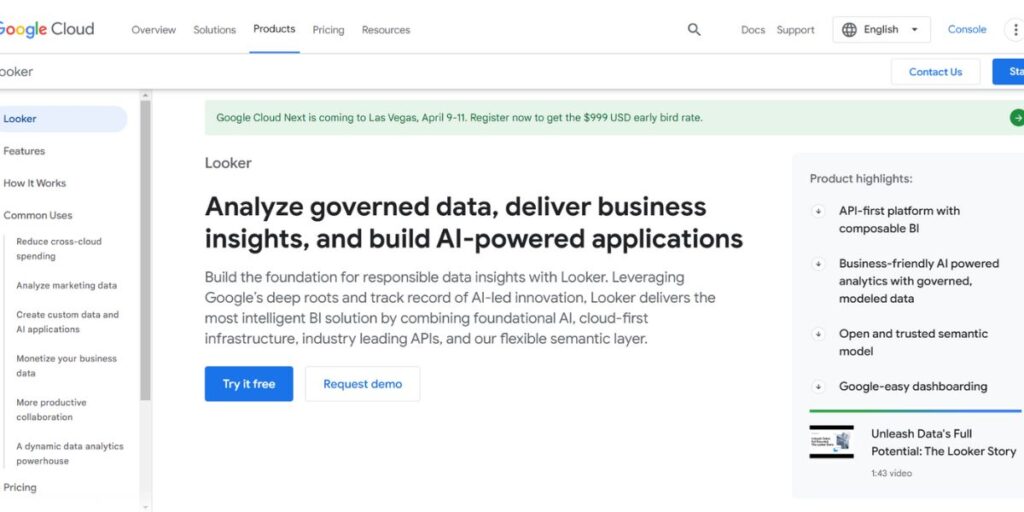
Looker, which is now a part of Google Cloud, has the strong suit of an advanced LookML language that extends users the capabilities of data modeling. Embedded analytics tools are a key feature, allowing businesses to integrate Looker’s visualizations and reports into their applications so users can base decisions on data. To me, the tool’s tight integration with Google Cloud provides the added advantages of greater scalability and performance for truly cloud-centric organizations.
While the end product is robust, having its intricacies explained means that Looker is well-suited to organizations insisting on bespoke and sophisticated BI solutions. While it can be expensive depending on the company size, it is one of the most unique tools that can provide premium, tailored data analysis for large organizations relying on data.
Key Features:
- LookML for advanced data modeling
- Integration with Google Cloud and other data warehouses
- Real-time analytics and reporting
Pros:
- Strong integration with cloud platforms
- Advanced data modeling capabilities
- Supports custom visualizations and dashboarding
Cons:
- Can be difficult for non-technical users
- Pricing can be high for small businesses
- Requires a steep learning curve for advanced features
Ideal For: Data-driven organizations that require advanced analytics
Pricing: Contact for pricing
Rating: 4.7/5
Website: www.looker.com
5. Qlik Sense Embedded Analytics
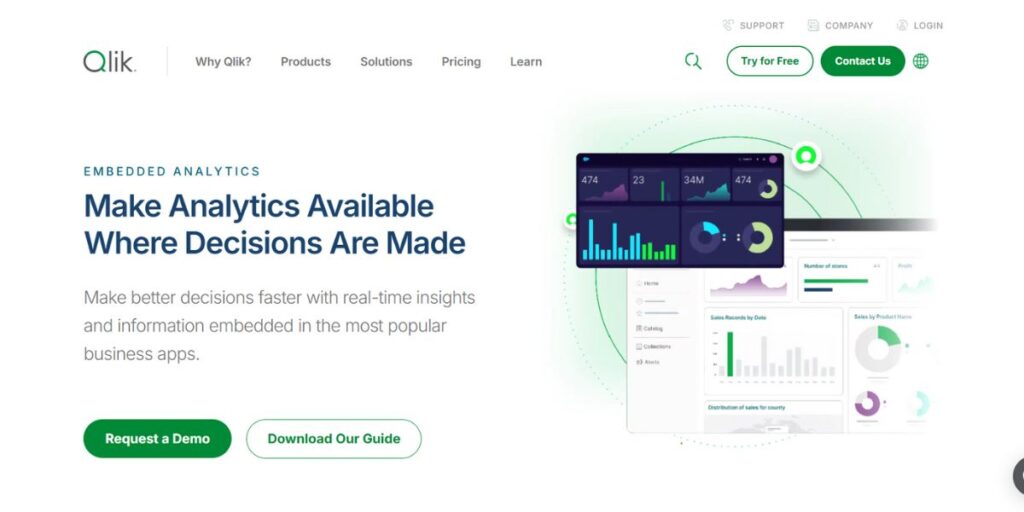
Qlik Sense has an associative data model where instead of having to follow a specific query pattern it can be done on the go. It is for this reason that the model is a perfect fit for organizations that handle such data sets. It is equally suitable for multi-cloud environments as Zabbix and has a powerful reporting and visualization system.
The platform is relatively customizable meaning that users can be able to create wonderful looking dashboards to meet certain requirements. Though, learning adaptive functions demands a lot of practice and its expense can be a con for any small business. Namely, Qlik Sense is perfect as a medium and deep analysis tool for businesses with complex calculations on the data.
Key Features:
- Associative data engine for interactive analysis
- Robust reporting and visualization capabilities
- Support for multi-cloud environments
Pros:
- Flexible data exploration and analysis
- High-quality visualizations and reporting
- Strong support for complex data models
Cons:
- User interface can be overwhelming
- Requires significant training to master advanced features
- May be more expensive for small organizations
Ideal For: Organizations with complex data analytics needs
Pricing: Starts at $30 per user per month
Rating: 4.5/5
Website: www.qlik.com
6. Domo
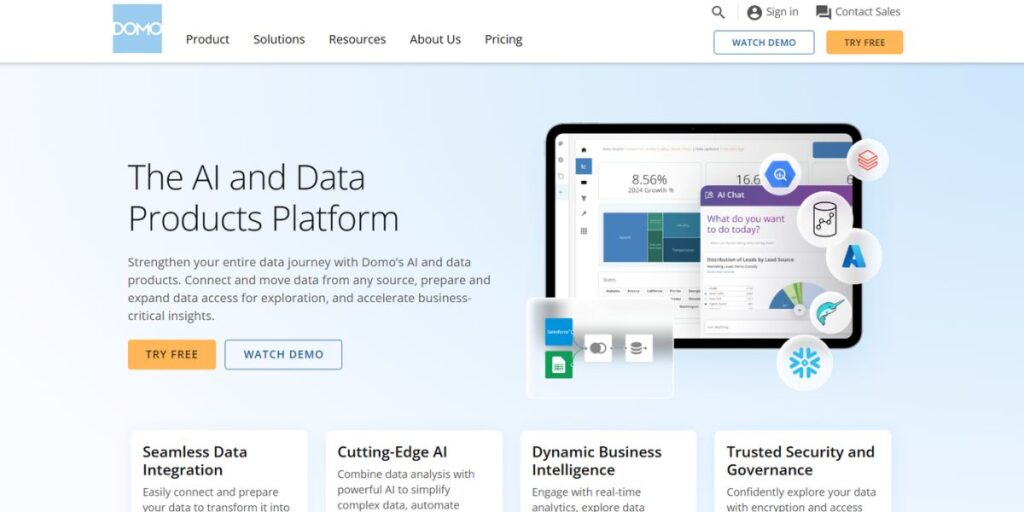
Domo is an embedded analytics tool built in the cloud to help users make sense of complex data relationships. Those real time analysis abilities and live interface and adaptable widgets deliver business analytics across several devices such as mobile. Data integration: Domo integrates with many data sources and has a simple design allowing the average user to navigate.
Despite the limitations in its advanced analytics, an inability to fully customize perhaps may not be appealing to some users, Domo still stands as the perfect solution for midsize organizations or teams that need their analytics deeply integrated into their workflow management software. This makes it more suited to real-time update of data to enable quick formulation of relevant decisions, particularly in fast-changing business situations.
Key Features:
- Real-time data integration and analytics
- Customizable, interactive dashboards
- Cloud-based platform with mobile support
Pros:
- Easy to use and set up
- Real-time data updates
- Flexible integration with various data sources
Cons:
- Limited advanced analytics features
- Can be expensive for small businesses
- Customization options are limited
Ideal For: Mid-sized businesses and teams needing simple embedded analytics
Pricing: Contact for pricing
Rating: 4.3/5
Website: www.domo.com
7. IBM Cognos Analytics
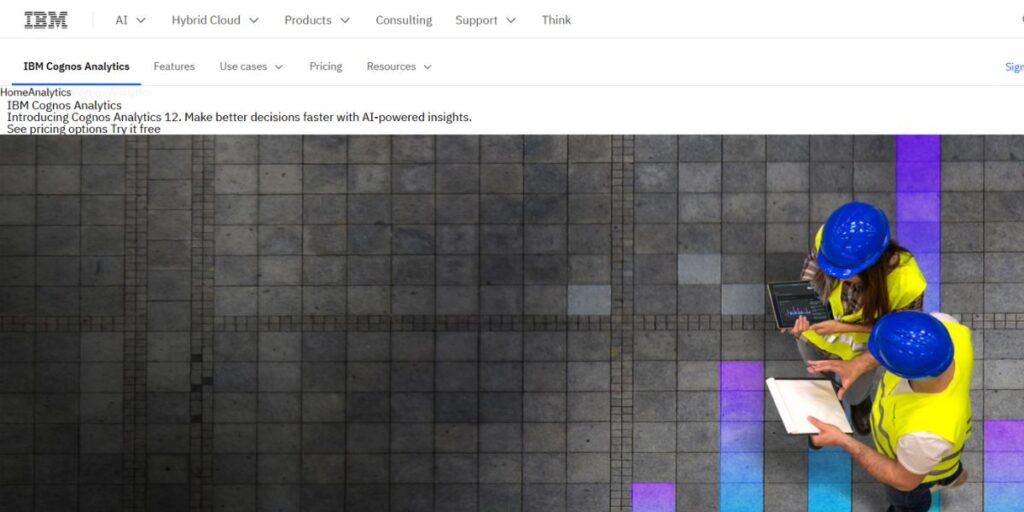
IBM Cognos Analytics incorporates a full set of integrated BI and analytics tools involving the use of AI especially in predictive analytics. The tool can connect with enterprise data software and allows businesses to develop complex reports and or dashboards for the business. Therefore, Cognos can handle difficult data modeling and transformation that are ideal for large organizations with multiple data needs.
Despite the fact that its setup and configuration are elaborate, this tool is almost unrivaled in terms of analytical capabilities as well as the integration possibilities. It can prove complex for small businesses in terms of pricing and learning curve but still the product of choice for large enterprises for its embedded analytics with predictive insights.
Key Features:
- AI-driven insights and reporting
- Advanced data modeling and transformation
- Integration with enterprise data systems
Pros:
- Robust analytics and reporting features
- AI-powered insights for predictive analytics
- Strong integration with IBM and third-party tools
Cons:
- Complex setup and configuration
- Steep learning curve for new users
- Higher pricing for smaller organizations
Ideal For: Enterprises with complex data and reporting needs
Pricing: Contact for pricing
Rating: 4.6/5
Website: www.ibm.com/products/cognos-analytics
8. TIBCO Jaspersoft
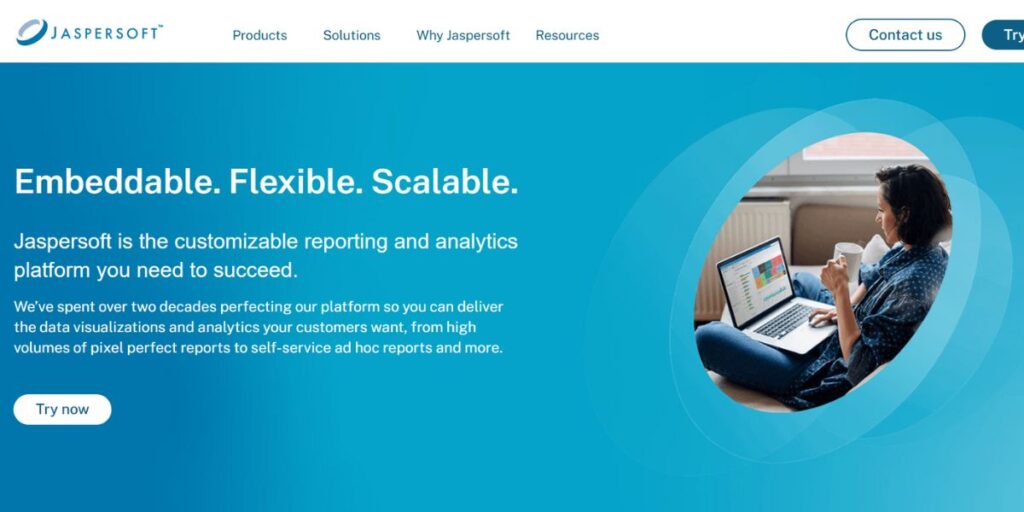
TIBCO Jaspersoft is an embedded BI company that focuses on customised dashboards and reports within various applications. The open-source availability of this system gives developers freedom with its option for various types of deployment. As such, the embedded analytical tool is relevant more to organizations that may need distinctive reportage and portrayal methodologies.
However, its real-time analysis aspects are not highly developed, and perhaps, the customization can only be made with some computer programming knowledge. Nevertheless, Jaspersoft is highly flexible and relatively affordable for developers and businesses who require embedded reporting solutions that fit into particular contexts.
Key Features:
- Open-source options for flexible deployment
- Customizable dashboards and reports
- Advanced scheduling and alerting features
Pros:
- Open-source and flexible for developers
- Strong reporting and visualization capabilities
- Supports a wide range of data sources
Cons:
- Limited real-time analytics features
- Can be difficult to customize
- Requires technical expertise for setup
Ideal For: Developers and organizations needing customizable embedded reporting
Pricing: Contact for pricing
Rating: 4.2/5
Website: www.jaspersoft.com
9. Zoho Analytics
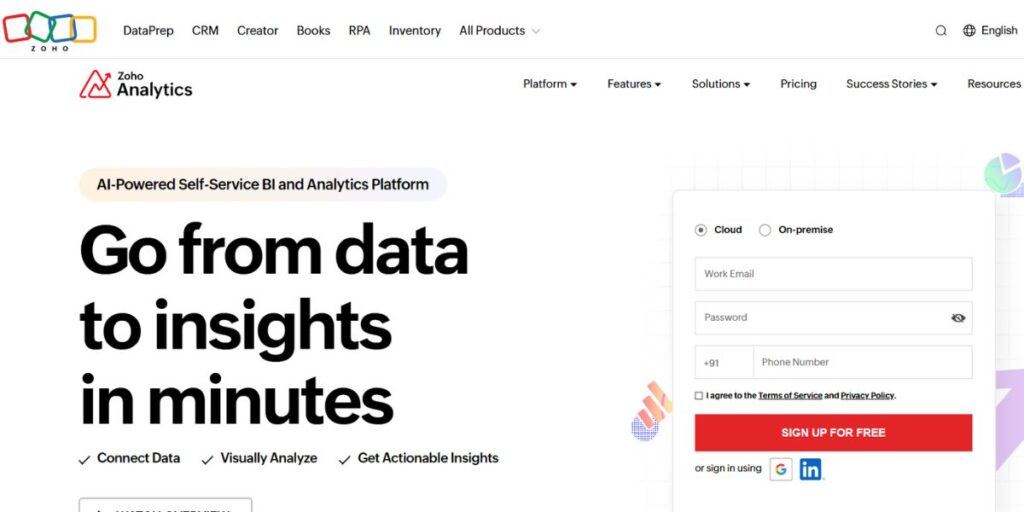
Zoho Analytics is a Balanced and affordable embedded analytics tools suitable for Small to Medium Scale Businesses. It is compatible with other business applications they use; for instance, Zoho CRM to enable designers to develop engaging dashboards and reports. YM Business Suite’s ability to quickly and easily drop and drop contents into spaces makes it easy for non technical users to use, but at the same time it contains high level analytical tools for richer uses.
One downside is it has limited capability in terms of predictive analytics and is very slow when dealing with large data set size; nevertheless, Zoho Analytics is indeed a good solution in terms of offering a plain and easy to use embedded analytics tool for the business that requires low cost investment. The benefit it provides can be best understood for organizations already using other tools available in Zoho’s business ecosystem.
Key Features:
- Drag-and-drop interface for creating reports and dashboards
- Integration with popular business apps like Zoho CRM
- Advanced analytics and reporting
Pros:
- Affordable pricing
- Easy integration with other Zoho apps
- Intuitive user interface
Cons:
- Limited customization options
- Basic predictive analytics capabilities
- Can be slow with large datasets
Ideal For: Small to mid-sized businesses
Pricing: Starts at $24 per user per month
Rating: 4.1/5
Website: www.zoho.com/analytics
10. Klipfolio
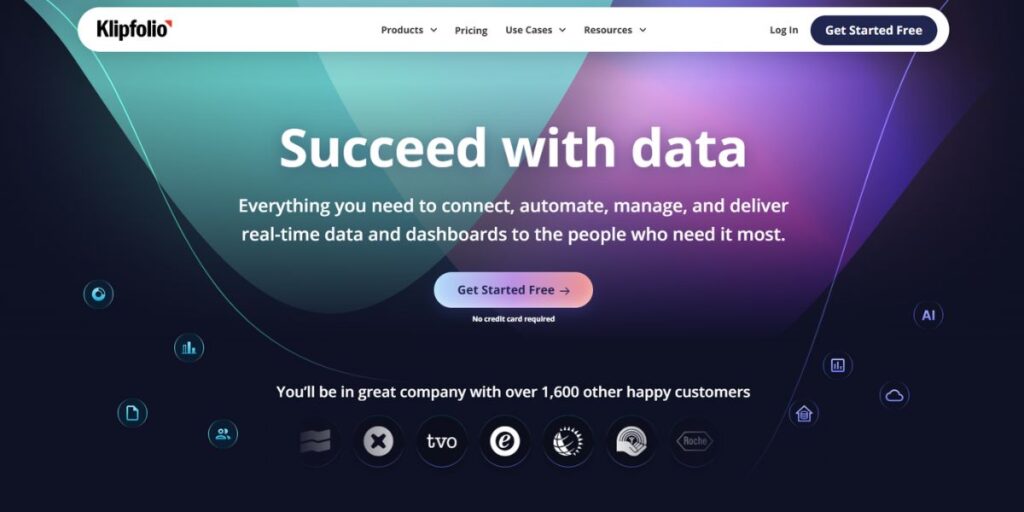
Klipfolio provides an embedded analytics solution based on the cloud allowing businesses to easily integrate real-time data visualization. Many of its dashboards are customizable to allow for updated information from various sources so that more sound decisions are made within a short span. The platform is easy and looks good, thus is especially targeted for small and mid-sized businesses that just need simple analytics.
However, it has fewer options for advanced functions and customized offers; it is not proper for big organizations or big projects. In the case of businesses that have little time to waste Klipfolio is one such service I’d recommend which provides the results in simple packages that anyone would find easy to decipher.
Key Features:
- Customizable dashboards and reports
- Integration with over 100 data sources
- Real-time data updates
Pros:
- User-friendly and quick to set up
- Cost-effective for small businesses
- Supports real-time data updates
Cons:
- Limited advanced analytics features
- Customization options are somewhat basic
- Can struggle with large data sets
Ideal For: Small to mid-sized businesses looking for a simple embedded analytics solution
Pricing: Starts at $49 per month
Rating: 4.0/5
Website: www.klipfolio.com
Conclusion
The features that have formed the basis of the embedded analytics tools are defining the future of big data analytics by making the latter more useful. Technology combined with advancements in the analytics field, smoother integration into the tools of 2025 will help exert better control, improve user experience and make the decision-making process savvy in nature.
When it comes to integration and customization considerations, through to scalability and security measures, the selection of the right Variant embedded analytics add-ons will determine the maximum return of investment on your valuable data sets. It is only with the help of the top embedded analytics softwares to help businesses manage their activities in a superior manner and stay ahead of competition through innovation and smarter decisions.
FAQs
What are the features of embedded analytics Tools?
The embedded analytical tools are used to help combine the data analysis and visualization functionalities into the business applications as users do not have to switch to another tool to make insights.
What are the primary advantages of the embedded analytics platforms?
Some of the benefits include; better decision making, saving on time and costs, better productive working, and effective communications across departments.
What about embedded analytics tools for small businesses?
Indeed, the majority of the embedded analytical applications come with possible favorable unit prices and they are easily determinable to fit business sizes.
Can business analytics be implemented securely?
There is a general security feature that is regularly accompanying most of the embedded analytics solutions to safeguard important information and accord with regulations on the protection of data.
What’s the best embedded analytics tool for my business and how can I determine this?
Check your requirements according to the characteristics such as data feeds availability, possibilities to customize the tool, its simplicity/complexity, costs, and its adaptability to your organization’s needs.

